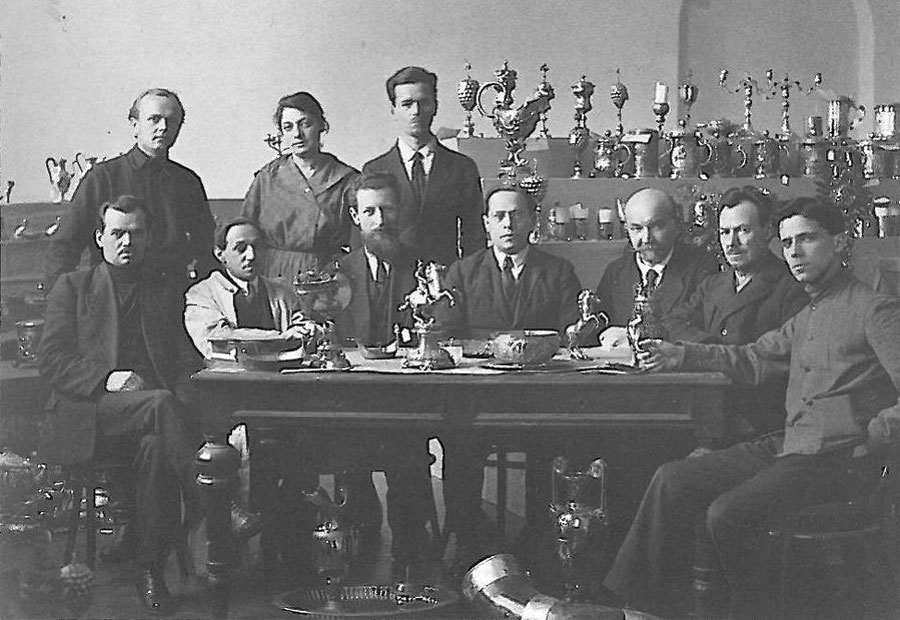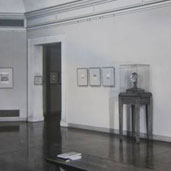When the Stroganovs fled their homeland due to the unrest of the Russian Revolution, they left behind the “Stroganov” plate, along with most of the contents of their palace on Nevsky Prospekt in Saint Petersburg.
To pay off enormous debts accumulated during World War I, the government of the newly created Soviet Union founded the Antiques Export Fund (Antikvarnyi Eksportnyi Fond), which sold art to foreign collectors in the 1920s and 1930s. The Fund liquidated the contents of the Stroganov Palace in 1925, and six years later most of the Stroganov art collection was sold by the Lepke Gallery in Germany. The Stroganov collection of Sasanian silver, however, was deemed too valuable for sale. It was displayed in the Iranian Art Exhibition in London in 1931. Many of the silver objects entered the collection of the Hermitage Museum in Saint Petersburg.
When the Fund eyed the collection for sale the next year, Iosif Orbeli, the curator of Eastern art at the Hermitage, wrote to Joseph Stalin, then head of the Communist Party, and asked him to prevent the sale. Stalin replied: “Comrade Orbeli!… Examination has shown that Antikvariat’s demands are unfounded. In connection with this appropriate quarters have required the export organs not to touch the Eastern section of the Hermitage.”
The Fund continued to sell objects from the Hermitage through the 1930s. Sometime in 1933 or 1934 the art collector and dealer Hagop Kevorkian acquired the Shapur plate. While Kevorkian never revealed where he purchased the plate, he presumably acquired it directly from the Soviet Union, since it did not appear in European sales. In 1934 the Shapur plate and a similar one depicting a king hunting rams (now in the collection of the Metropolitan Museum of Art in New York City) became some of the first Sasanian silver vessels to enter museum collections in the United States.
Richard Ettinghausen, the distinguished curator of Islamic and ancient Near Eastern art at the Freer Gallery from 1944 to 1966, built an impressive collection for the museum. Arthur M. Sackler’s generous donation of ancient Iranian art in 1987 made the Sackler Gallery one of the premier collections of Sasanian metalwork. For the first time, selections of ancient Iranian metalwork from the Freer Gallery of Art and Arthur M. Sackler Gallery are on view together in Feast Your Eyes: A Taste for Luxury Arts from Ancient Iran.

In terrible debt after World War I, the government of the newly created Soviet Union confiscated silver and precious objects from churches, museums, and private estates in an effort to raise much-needed funds. This special committee decided which silver objects would be melted down and which would be preserved.

After the Shapur plate left the Soviet Union, it entered the collection of the Freer Gallery of Art, one of the first museums in the United States to acquire Sasanian art. Here, the plate is on view in an exhibition of Iranian manuscript illuminations from the Islamic period.

In the Soviet Union, Torgsin shops sold Russian antiquities as a way to bring in hard currency from foreigners.




